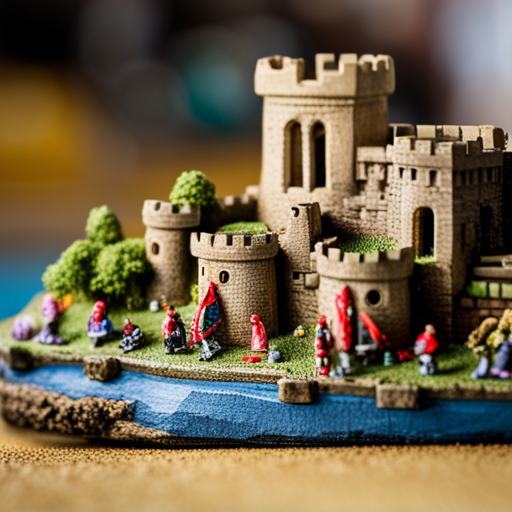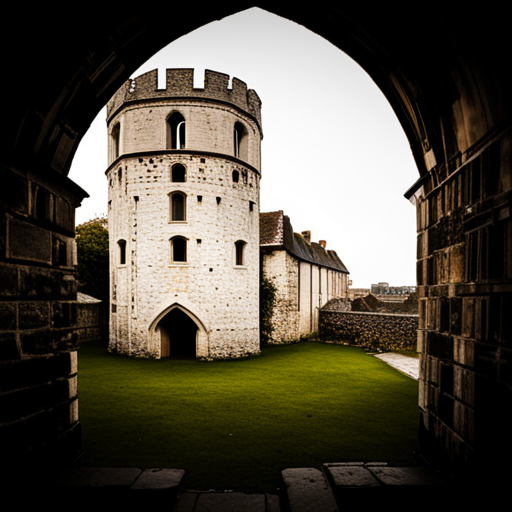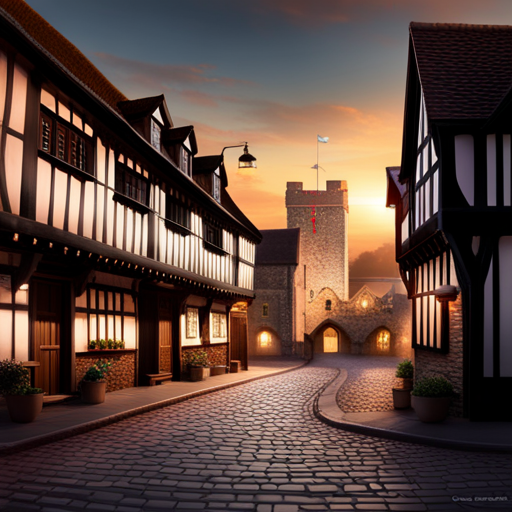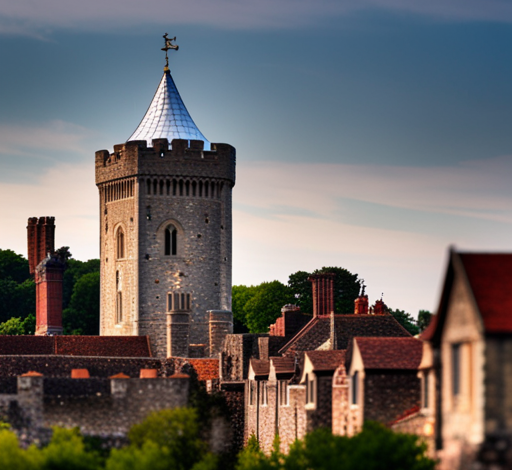
Unveiling Normandys Impact: Southamptons Medieval Origins Explored
Discover the fascinating history of Southampton and its medieval origins as you delve into the impact of Normandy. Unveil the secrets of how the Norman Conquest shaped the foundation of this vibrant city.
Explore the architectural legacy left behind by the Normans and delve into the cultural fusion that shaped Southampton’s society.
Learn how Normandy influenced the city’s economic development through trade and commerce.
Join us on a journey to uncover Southampton’s rich Norman heritage and its medieval past.
The Norman Conquest: Shaping Southampton’s Foundation

You’ll be fascinated to learn how the Norman Conquest shaped Southampton’s foundation.
In 1066, William the Conqueror invaded England, bringing with him a new era of Norman influence. Southampton, strategically located on the south coast, became a crucial port for the Normans to control. They recognized its potential and immediately set about fortifying the town.
The Norman rulers established a castle, known as Southampton Castle, to protect the port and maintain their control. They also built a network of walls and gates, which still exist today as remnants of Southampton’s medieval past. These fortifications not only provided security but also facilitated trade and commerce, leading to the growth and prosperity of the town.
The Norman Conquest laid the foundation for Southampton’s development as a thriving medieval port city.
Architectural Legacy: Norman Influence on Southampton’s Medieval Structures

Don’t overlook the lasting impact of the Normans on Southampton’s medieval structures.
When it comes to exploring the architectural legacy of this historic city, the Normans played a crucial role in shaping its medieval structures that still stand today.
From the moment they arrived in 1066, the Normans brought their own style of building, characterized by strong, solid structures and distinctive features such as rounded arches and decorative elements.
These architectural influences can be seen in prominent buildings like the Southampton City Walls, Bargate, and St. Michael’s Church.
The Normans not only left their mark on the city’s physical structures but also influenced the overall layout and design of Southampton’s medieval town plan.
Cultural Fusion: Exploring the Normans’ Impact on Southampton’s Society

As you walk through the streets of Southampton, you can feel the cultural fusion that the Normans brought to the city’s society. The Normans, who arrived in England in 1066, left a lasting impact on Southampton’s social fabric.
They introduced a new language, French, which became the language of the ruling elite and influenced the development of the English language. They also brought with them a taste for fine dining, fashion, and sophisticated entertainment, which influenced the local aristocracy and the emerging middle class.
The Normans also introduced new legal and administrative systems, such as the Domesday Book, which helped establish a more organized and centralized government.
Overall, the Normans’ influence on Southampton’s society can still be seen and felt today, making the city a fascinating blend of medieval heritage and modern multiculturalism.
Trade and Commerce: How Normandy Shaped Southampton’s Economic Development

When exploring Southampton’s economic development, you can observe the significant influence that Normandy had on trade and commerce in the city.
In the medieval period, Southampton served as a vital trading port, and its ties to Normandy played a crucial role in shaping its economic landscape. The Normans brought with them a wealth of knowledge and expertise in maritime trade, which they applied to Southampton’s bustling harbor. They introduced new techniques and technologies that improved the efficiency of trade, such as the use of larger and sturdier ships.
Additionally, Normandy’s close proximity to Southampton allowed for a steady flow of goods and resources, further boosting the city’s economic growth. The impact of Normandy on Southampton’s trade and commerce was undeniable, laying the foundation for the city’s future prosperity.
Southampton’s Norman Heritage: Uncovering the City’s Medieval Past

To truly understand Southampton’s medieval past, you must delve into the city’s Norman heritage. The Normans, led by William the Conqueror, had a profound impact on the development of Southampton during the medieval period. They built impressive fortifications, including the iconic Bargate, which still stands as a testament to their influence.
The Normans also established a thriving port, strategically located on the south coast of England. This led to an influx of trade and prosperity, making Southampton one of the wealthiest towns in medieval England. The city’s Norman heritage can be seen in its architecture, with many buildings exhibiting distinct Norman features such as rounded arches and decorative motifs.
Exploring Southampton’s Norman past is like stepping back in time, as you uncover the rich history that shaped the city we know today.
Conclusion
In conclusion, the Norman Conquest played a significant role in shaping Southampton’s foundation, leaving a lasting architectural legacy and influencing the city’s medieval structures.
The cultural fusion brought about by the Normans also had a profound impact on Southampton’s society.
Additionally, the trade and commerce that flourished as a result of Normandy’s influence contributed to Southampton’s economic development.
Uncovering Southampton’s Norman heritage allows us to better understand the city’s rich medieval past and appreciate the enduring impact of the Normans.



